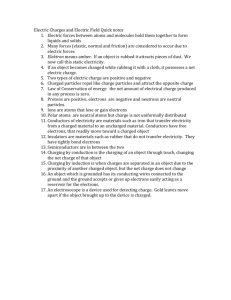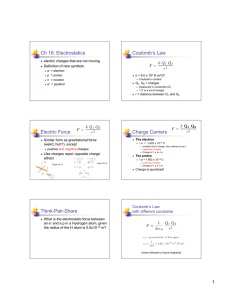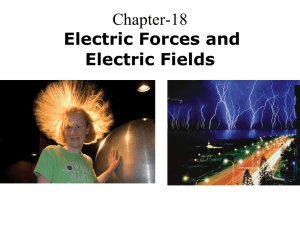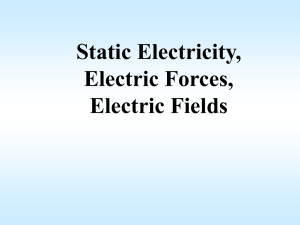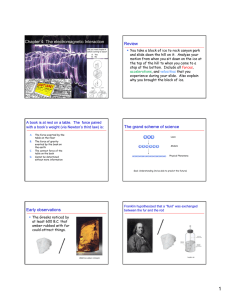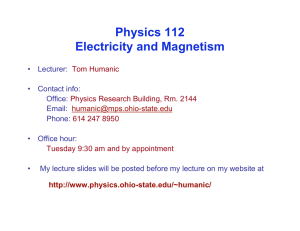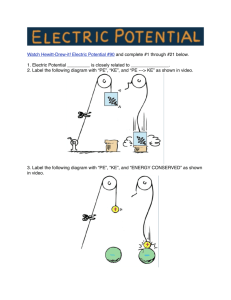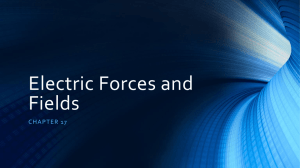Electric Charges Homework
advertisement
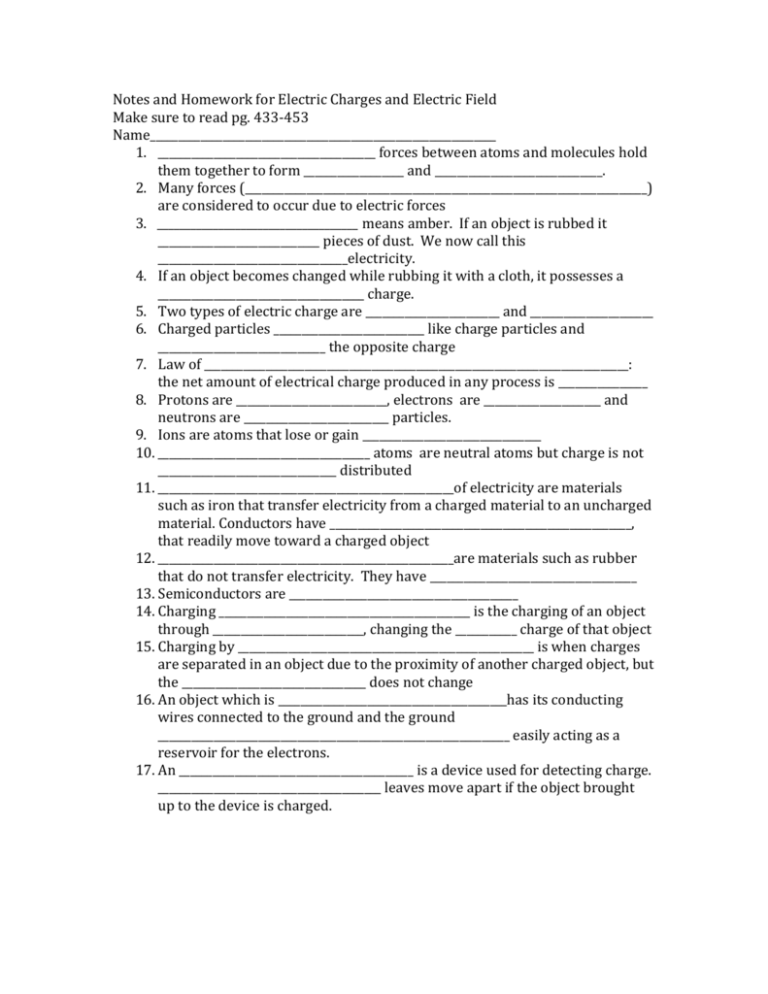
Notes and Homework for Electric Charges and Electric Field Make sure to read pg. 433-453 Name______________________________________________________________ 1. _______________________________________ forces between atoms and molecules hold them together to form __________________ and ______________________________. 2. Many forces (________________________________________________________________________) are considered to occur due to electric forces 3. ____________________________________ means amber. If an object is rubbed it _____________________________ pieces of dust. We now call this __________________________________electricity. 4. If an object becomes changed while rubbing it with a cloth, it possesses a _____________________________________ charge. 5. Two types of electric charge are ________________________ and ______________________ 6. Charged particles ___________________________ like charge particles and ______________________________ the opposite charge 7. Law of ____________________________________________________________________________: the net amount of electrical charge produced in any process is ________________ 8. Protons are ___________________________, electrons are _____________________ and neutrons are __________________________ particles. 9. Ions are atoms that lose or gain ________________________________ 10. ______________________________________ atoms are neutral atoms but charge is not ________________________________ distributed 11. _____________________________________________________of electricity are materials such as iron that transfer electricity from a charged material to an uncharged material. Conductors have ______________________________________________________, that readily move toward a charged object 12. _____________________________________________________are materials such as rubber that do not transfer electricity. They have _____________________________________ 13. Semiconductors are _________________________________________ 14. Charging _____________________________________________ is the charging of an object through ___________________________, changing the ___________ charge of that object 15. Charging by _____________________________________________________ is when charges are separated in an object due to the proximity of another charged object, but the _________________________________ does not change 16. An object which is _________________________________________has its conducting wires connected to the ground and the ground _______________________________________________________________ easily acting as a reservoir for the electrons. 17. An __________________________________________ is a device used for detecting charge. ________________________________________ leaves move apart if the object brought up to the device is charged. Coulomb’s Law 1. ________________________________________________________ (1736-1836) investigated electric forces in the 1780’s 2. Concluded that the electric _______________________________ on one charged object on another charged object is _____________________________________________________ to the charge on each of them 3. Led to Coulomb’s Law which is: ______________________________________________ where _________ is a proportionality constant, the force is the ________________________________________________ of one charged object on another, ___________ is the magnitude of each object and _________ is the distance between them. 4. The ________________________________of the electric force is always along the line joining the two charges and depends on if they have the same sign or different signs 5. The SI unit charge is the ___________________________ 6. k = _________________________________________________ 7. Coulomb is very large and is the amount of charge you place on two objects, ______________________________, each object would exert a force of 9x109 8. Objects with static electricity are in the ______________________________________________ 9. The elementary charge is the smallest charge found in nature and is: e=_________________________________________ 10. Electrons are ______________________________ (existing in discrete amounts) 11. Coulomb’s Law looks very much like the __________________________________________ 12. When determining r, if the two objects are _______________________________ we use the distance between their _______________________ 13. Coulomb’s law only works with charges at ___________________________and only gives the __________________________________________ force. 14. When using Coulomb’s Law we ignore ________________________________________ and use magnitudes only. 15. The electrostatic force is a _____________________, with magnitude and _____________________________. 16. It is important to draw a ____________________________________ in applying Coulomb’s Law 17. Add all forces together to obtain the __________________ force of an object. Now take a look at the Example 16-1 and 16-2, what is the equation used? What does example 16-2 prove? Make sure to look through the vector review on pg. 450 and write down anything that might help you with reviewing vectors: Read through examples 16-3, how do you apply vectors to help solve a problem of three charges? Now, let’s try a few problems. First go to the questions on pg. 467 and answer 3, 6 and 10. Then do the following problems form pg 469: # 2, 8, and 17
